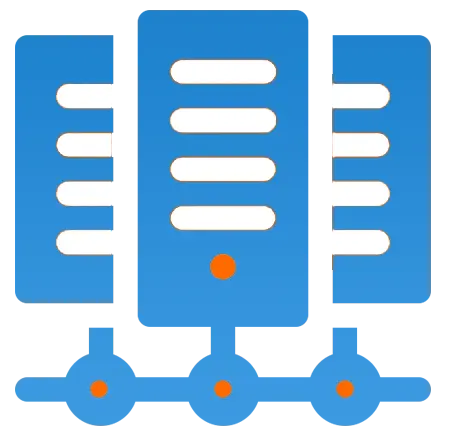Get 69% Off on Cloud Hosting : Claim Your Offer Now!
- Products
-
Compute
Compute
- Predefined TemplatesChoose from a library of predefined templates to deploy virtual machines!
- Custom TemplatesUse Cyfuture Cloud custom templates to create new VMs in a cloud computing environment
- Spot Machines/ Machines on Flex ModelAffordable compute instances suitable for batch jobs and fault-tolerant workloads.
- Shielded ComputingProtect enterprise workloads from threats like remote attacks, privilege escalation, and malicious insiders with Shielded Computing
- GPU CloudGet access to graphics processing units (GPUs) through a Cyfuture cloud infrastructure
- vAppsHost applications and services, or create a test or development environment with Cyfuture Cloud vApps, powered by VMware
- Serverless ComputingNo need to worry about provisioning or managing servers, switch to Serverless Computing with Cyfuture Cloud
- HPCHigh-Performance Computing
- BaremetalBare metal refers to a type of cloud computing service that provides access to dedicated physical servers, rather than virtualized servers.
-
Storage
Storage
- Standard StorageGet access to low-latency access to data and a high level of reliability with Cyfuture Cloud standard storage service
- Nearline StorageStore data at a lower cost without compromising on the level of availability with Nearline
- Coldline StorageStore infrequently used data at low cost with Cyfuture Cloud coldline storage
- Archival StorageStore data in a long-term, durable manner with Cyfuture Cloud archival storage service
-
Database
Database
- MS SQLStore and manage a wide range of applications with Cyfuture Cloud MS SQL
- MariaDBStore and manage data with the cloud with enhanced speed and reliability
- MongoDBNow, store and manage large amounts of data in the cloud with Cyfuture Cloud MongoDB
- Redis CacheStore and retrieve large amounts of data quickly with Cyfuture Cloud Redis Cache
-
Automation
Automation
-
Containers
Containers
- KubernetesNow deploy and manage your applications more efficiently and effectively with the Cyfuture Cloud Kubernetes service
- MicroservicesDesign a cloud application that is multilingual, easily scalable, easy to maintain and deploy, highly available, and minimizes failures using Cyfuture Cloud microservices
-
Operations
Operations
- Real-time Monitoring & Logging ServicesMonitor & track the performance of your applications with real-time monitoring & logging services offered by Cyfuture Cloud
- Infra-maintenance & OptimizationEnsure that your organization is functioning properly with Cyfuture Cloud
- Application Performance ServiceOptimize the performance of your applications over cloud with us
- Database Performance ServiceOptimize the performance of databases over the cloud with us
- Security Managed ServiceProtect your systems and data from security threats with us!
- Back-up As a ServiceStore and manage backups of data in the cloud with Cyfuture Cloud Backup as a Service
- Data Back-up & RestoreStore and manage backups of your data in the cloud with us
- Remote Back-upStore and manage backups in the cloud with remote backup service with Cyfuture Cloud
- Disaster RecoveryStore copies of your data and applications in the cloud and use them to recover in the event of a disaster with the disaster recovery service offered by us
-
Networking
Networking
- Load BalancerEnsure that applications deployed across cloud environments are available, secure, and responsive with an easy, modern approach to load balancing
- Virtual Data CenterNo need to build and maintain a physical data center. It’s time for the virtual data center
- Private LinkPrivate Link is a service offered by Cyfuture Cloud that enables businesses to securely connect their on-premises network to Cyfuture Cloud's network over a private network connection
- Private CircuitGain a high level of security and privacy with private circuits
- VPN GatewaySecurely connect your on-premises network to our network over the internet with VPN Gateway
- CDNGet high availability and performance by distributing the service spatially relative to end users with CDN
-
Media
-
Analytics
Analytics
-
Security
Security
-
Network Firewall
- DNATTranslate destination IP address when connecting from public IP address to a private IP address with DNAT
- SNATWith SNAT, allow traffic from a private network to go to the internet
- WAFProtect your applications from any malicious activity with Cyfuture Cloud WAF service
- DDoSSave your organization from DoSS attacks with Cyfuture Cloud
- IPS/ IDSMonitor and prevent your cloud-based network & infrastructure with IPS/ IDS service by Cyfuture Cloud
- Anti-Virus & Anti-MalwareProtect your cloud-based network & infrastructure with antivirus and antimalware services by Cyfuture Cloud
- Threat EmulationTest the effectiveness of cloud security system with Cyfuture Cloud threat emulation service
- SIEM & SOARMonitor and respond to security threats with SIEM & SOAR services offered by Cyfuture Cloud
- Multi-Factor AuthenticationNow provide an additional layer of security to prevent unauthorized users from accessing your cloud account, even when the password has been stolen!
- SSLSecure data transmission over web browsers with SSL service offered by Cyfuture Cloud
- Threat Detection/ Zero DayThreat detection and zero-day protection are security features that are offered by Cyfuture Cloud as a part of its security offerings
- Vulnerability AssesmentIdentify and analyze vulnerabilities and weaknesses with the Vulnerability Assessment service offered by Cyfuture Cloud
- Penetration TestingIdentify and analyze vulnerabilities and weaknesses with the Penetration Testing service offered by Cyfuture Cloud
- Cloud Key ManagementSecure storage, management, and use of cryptographic keys within a cloud environment with Cloud Key Management
- Cloud Security Posture Management serviceWith Cyfuture Cloud, you get continuous cloud security improvements and adaptations to reduce the chances of successful attacks
- Managed HSMProtect sensitive data and meet regulatory requirements for secure data storage and processing.
- Zero TrustEnsure complete security of network connections and devices over the cloud with Zero Trust Service
- IdentityManage and control access to their network resources and applications for your business with Identity service by Cyfuture Cloud
-
-
Compute
- Solutions
-
Solutions
Solutions
-
 Cloud
Hosting
Cloud
Hosting
-
 VPS
Hosting
VPS
Hosting
-
GPU Cloud
-
 Dedicated
Server
Dedicated
Server
-
 Server
Colocation
Server
Colocation
-
 Backup as a Service
Backup as a Service
-
 CDN
Network
CDN
Network
-
 Window
Cloud Hosting
Window
Cloud Hosting
-
 Linux
Cloud Hosting
Linux
Cloud Hosting
-
Managed Cloud Service
-
Storage as a Service
-
 VMware
Public Cloud
VMware
Public Cloud
-
 Multi-Cloud
Hosting
Multi-Cloud
Hosting
-
 Cloud
Server Hosting
Cloud
Server Hosting
-
 Bare
Metal Server
Bare
Metal Server
-
 Virtual
Machine
Virtual
Machine
-
 Magento
Hosting
Magento
Hosting
-
Remote Backup
-
 DevOps
DevOps
-
 Kubernetes
Kubernetes
-
 Cloud
Storage
Cloud
Storage
-
NVMe Hosting
-
 DR
as s Service
DR
as s Service
-
-
Solutions
- Marketplace
- Pricing
- Resources
- Resources
-
By Product
Use Cases
-
By Industry
- Company
-
Company
Company
-
Company
Cloud Migration- The topic of the hour!
Table of Contents
- Different Types of Cloud Migration
- What are the advantages of moving to the cloud?
- What kinds of cloud migration are there?
- Obtain crucial information for more accurate assessment and planning.
- Recognize the requirements and usage of the application
- Minimise interruption and avoid delays while moving to the cloud
- Make cloud operations easier
- Cyfuture Cloud is a cloud-based platform.
For every cloud platform you pick, whether public or private, re-platforming, re-hosting, refactoring, or hybrid, Cyfuture Cloud ensures success at every stage of your migration journey.
Your business strategy must include the cloud. With Cyfuture Cloud, you may successfully migrate to the cloud by avoiding common risks.
Companies are now looking to the cloud to experience the advantages of cloud computing in order to replace outdated and increasingly inefficient legacy infrastructures, such as aging servers or potentially unreliable firewall appliances, or to get rid of hardware or software solutions that are no longer performing at their best. This is the reason why so many businesses are, at the very least, moving some of their operations to the cloud.
We are aware that moving to the cloud is essential to achieving updated and real-time performance. As a result, careful planning, analysis, and execution are necessary throughout the process to guarantee that the cloud solution meets your company’s needs.
While reading further, you also get a hand on secure cloud hosting for your business with Cyfuture Cloud.
Different Types of Cloud Migration
| Migration Type | Description |
|---|---|
| Lift and Shift | Also known as rehosting, it involves moving applications and data from an on-premises environment to the cloud without significant modification or redesign. |
| Replatforming | Involves making some adjustments to the existing applications to optimize them for the cloud environment, such as changing the infrastructure or middleware components. |
| Refactoring/Rearchitecting | Involves significant changes to the application architecture to leverage cloud-native features like serverless computing or microservices for better performance and scalability. |
| Repurchasing | Involves migrating to a different cloud-based software rather than the existing on-premises application, such as moving from a self-hosted CRM to a cloud-based CRM solution. |
| Retiring | Involves decommissioning or eliminating certain applications or components that are no longer needed or replaced by cloud-native services. |
| Retaining | Involves keeping certain applications or components on-premises due to specific compliance, security, or performance requirements. |
What are the advantages of moving to the cloud?
The cloud can have a huge impact on businesses that go through the cloud migration process.
The total cost of ownership (TCO) will be lower, delivery will happen more quickly, and there will be more options for innovation. Agility and flexibility, two qualities that are essential to satisfy shifting customer and industry expectations, come with cloud access.
What kinds of cloud migration are there?
Depending on the services a business actually need, cloud computing can be implemented in a variety of ways.
Two aspects must be taken into account by a business while developing its cloud migration plan. The deployment model—public cloud, private cloud, hybrid cloud, and multi-cloud—should be taken into account initially. The service category makes up the second component. Will it be IaaS (Infrastructure as a Service), PaaS (Platform as a Service), or SaaS (Software as a Service)?
There are numerous migration strategies that your business can select from. From a straightforward lift-and-shift operation known as re-host, which involves moving data and applications from a local, on-premises data center to the public cloud, to switching to a completely new cloud-based operating system (re-platform), which has the benefit of lowering operational costs, to upgrading application components to comply with new standards, there are many different types of lift-and-shift operations. A cloud migration, or cloud-to-cloud migration, can also involve moving data and applications from one cloud platform or provider to another.
Unclouding, often referred to as a reverse cloud migration or de-clouding, is a third type of migration in which data or applications are transferred from the cloud and back to a local data centre.
Make better plans
Make sure the software is effective in the cloud and that the new design and cloud architecture are sound. For thorough evaluation and effective design, Cyfuture Cloud offers crucial insights about the present application, including its architecture, consumption, resources, dependencies, and more.
Be more rapid
Service delivery is impacted and delayed by issues with cloud migration. Utilize automated root-cause analysis with end-user effect as the top priority. Make sure the migration goes more quickly and without a hitch by fixing issues more quickly and even blocking bad code builds before they enter production.
Simpler operation
Ensure that the service delivery standards for your new cloud-based environment are met. AI eliminates war rooms and lowers TCO by ensuring quick, proactive problem detection and resolution. Your operations will transition to the cloud seamlessly because Cyfuture Cloud links application services automatically before and after the migration.
Obtain crucial information for more accurate assessment and planning.
- Automatically generate an interactive dependency map of all application components across the entire stack in a matter of minutes.
- Recognize data sources and activity.
- Identify the dependencies and external resources.
Recognize the requirements and usage of the application
- Observe how users utilise the programme and how they access it.
- Decide on important business KPIs and transactions.
- Create a thorough performance baseline automatically.
- To ensure proper sizing and capacity planning, use performance metrics.
Minimise interruption and avoid delays while moving to the cloud
- The application and component components are fully observable in real time with Cyfuture Cloud migration tools, ensuring design compliance.
- Artificial intelligence aggressively identifies the underlying causes of problems by actively learning the behaviour of applications, spotting anomalies, and detecting them.
- Automated tests can be used to find architectural regressions. To halt faulty builds early in your delivery process, Cyfuture Cloud interfaces with your CI/CD tool chain.
Make cloud operations easier
- Infrastructure, containers, and cloud services are completely transparent thanks to multi-data center observability.
- Real-time visualization is provided for all pertinent metrics for each user, application, and transaction.
- For continued SLA tracking, cloud services are automatically linked to their pre-migration versions.
Cyfuture Cloud is a cloud-based platform.
- All significant cloud platforms are monitored by Cyfuture Cloud using cloud-native technology.
- Auto-detect cloud services and applications on AWS, Azure, Cloud Foundry, OpenStack, OpenShift, and other platforms.
- Observability into containers is gained from the standpoint of the application.
Recent Post

Stay Ahead of the Curve.
Join the Cloud Movement, today!
© Cyfuture, All rights reserved.
Send this to a friend

 Pricing
Calculator
Pricing
Calculator
 Power
Power
 Utilities
Utilities VMware
Private Cloud
VMware
Private Cloud VMware
on AWS
VMware
on AWS VMware
on Azure
VMware
on Azure Service
Level Agreement
Service
Level Agreement 


















